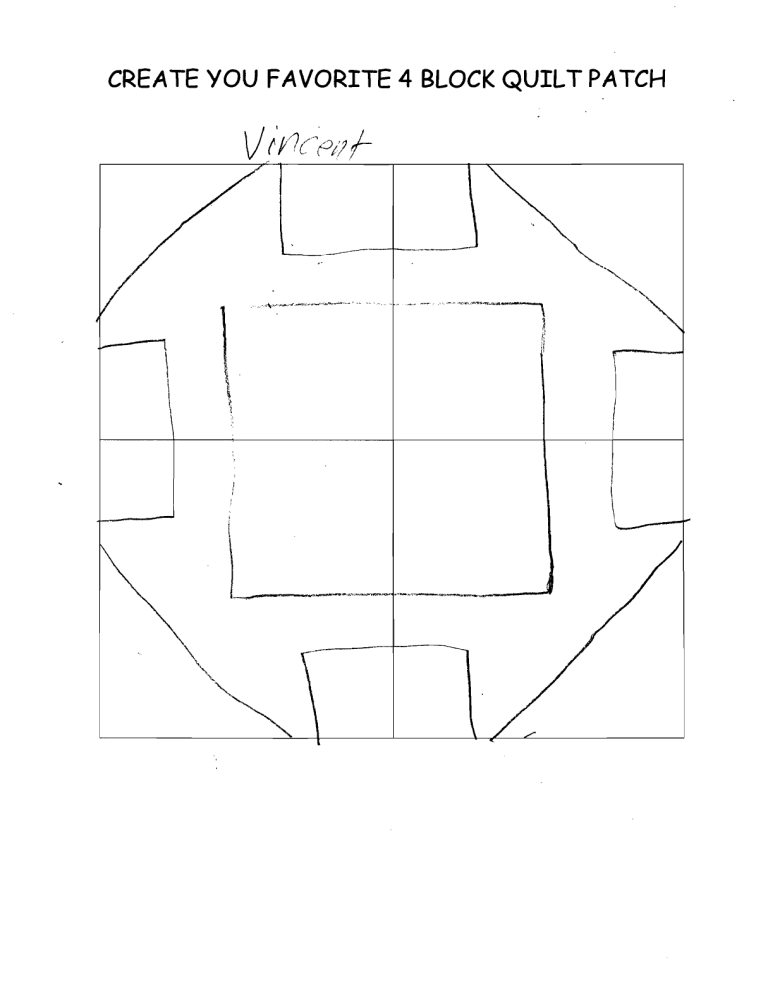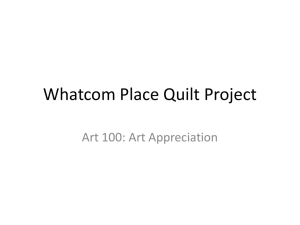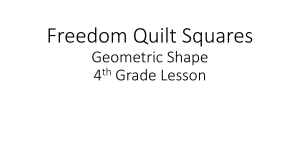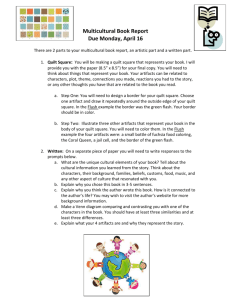\ CREATE YOU FAVORITE 4 BLOCK QUILT PATCH

CREATE YOU FAVORITE 4 BLOCK QUILT PATCH
\
\
\
I
/
./
/
"
,
\
I
I
J
CREATE YOU FAVORITE 4 BLOCK QUILT PATCH
/
I
/
\
\
\
\
..
\
\,
\~
.~\
~
I
I f f
, f
I
!
\
\
\
\
\ l
\
\
CREATE YOU FAVORITE 4 BLOCK QUILT PATCH
CREATE YOU FAVORITE 4 BLOCK QUILT PATCH
0+
dof\e
CREATE YOU FAVORITE 4 BLOCK QUILT PATCH
•
CREATE YOU FAVORITE 4 BLOCK QUILT PATCH
CREATE YOU FAVORITE 4 BLOCK QUILT PATCH
</
/
)
CREATE YOU FAVORITE 4 BLOCK QUILT PATCH
I
"~'"'''
-
Q, . '
J ~~'1\\;'\
\
\;
, \> "
,i
, 0
CREATE YOU FAVORITE 4 BLOCK QUILT PATCH
---~
J , it
\
\ ,
CREATE YOU FAVORITE 4 BLOCK QUILT PATCH
CREATE YOU FAVORITE 4 BLOCK QUILT PATCH
J
/
'\
,
CREATE YOU FAVORITE 4 BLOCK QUILT PATCH
CREATE YOU FAVORITE 4 BLOCK QUILT PATCH .
~
. . . ~o~'
\fa!oJY
lo!
Qcge-Io S'ec"cJt-
CREATE YOU FAVORITE 4 BLOCK QUILT PATCH
.
~.
~L
0'/
D
CREATE YOU FAVORITE 4 BLOCK QUILT PATCH
CREATE YOU FAVORITE 4 BLOCK QUILT PATCH
L~.
I \',
\
. '
.
\
Dev a CArl
CREATE YOU FAVORITE 4 BLOCK QUILT PATCH
/
/
\~
...
'~~-------'----.-. ~-'
•.
--~ '"--"~-
\.J f) r\
-" . ," "' -.M __ •. _,, __ •
-
I t
\
\
I
L-
(
CREATE YOU FAVORITE 4 BLOCK QUILT PATCH
CREATE YOU FAVORITE 4 BLOCK QUILT PATCH
\
The Underground Railroad was not underground or a railroad. There were no tunnels with secret tracks that lead from the Southern states to the Northern states. What was the Underground Railroad then? It was a network of people who worked together to help slaves escape from plantations and flee to freedom in the Northern states. The most shocking fact was that the masters of the slaves never figured out the system and it operated at its highest levels from the 1830's - 1850's. Yet, even this fact is an estimate because there is so little recorded data about the Underground Railroad. One can only speculate what would have happened if a master had stumbled upon detailed records of the
Underground Railroad. For this reason, (and the fact that slaves were barred from learning how to read) slaves primarily communicated about the Undergrollnd Railroad through words and songs.
Many people believe that slaves sang certain songs that gave them instructions on how to escape to the North. The most famous of these songs is "Follow the Drinking Gourd" which was supposedly spread from
plantation to plantation by a traveling carpenter named Peg Leg Joe. This song told slaves to travel North by following the Big Dipper constellation and gave them other instructions including "The old man is awaiting for to carry you to freedom" which means to find a representative from the
Underground Railroad to help them get across the Ohio River. This song was eventually written down and preserved through the years and it demonstrates the importance of oral history as a means of communication in the African-American community. Recently, a new theory has emerged about quilts and the Underground Railroad called azelia's quilt code.
The theory about this code came to the attention of the public through Jacqueline Tobin and Raymond Dobard's book, Hidden in Plain
View: The Secret Story of Quilts and the Underground Railroad. As soon as this book was published, a virtual storm of controversy began on the
Internet and in magazines. Many were quick to support the story and others found faults in the research completed by Jacqueline Tobin and
Raymond Dobard. They called the book an engaging folktale. This paper will first describe how Jacqueline Tobin came to know of azelia's quilt code, how the code was preserved through the years, and how azelia's quilt code supposedly functioned in the Underground Railroad. Then, I
will detail the arguments against Ozella's quilt code including the lack of records or documentation, the power of a good story/ the impossibility of the code functioning properly/and the incorrect timeline of some of the patterns. After all these arguments are presented, I will conclude with my opinion on the historical accuracy of Ozella's quilt code and my decision on whether to teach my future classrooms about Ozella's quilt code or not.
This story would have never come to public's attention if Jacqueline
Tobin hadn't taken a vacation to Charleston, South Carolina, and wandered past a quilt stand in the marketplace. As she admired the quilts, the old woman working at the stand told her, "Look ... Did you know that quilts were used by slaves to communicate on the Underground
Railroad?" (Tobin p. 17) This perplexed Jacqueline and when she bought a quilt, she took the woman's business card with her. A couple of months later, Jacqueline decided to called Ozella McDaniel Williams and ask her about quilts and the Underground Railroad. Ozella cryptically responded,
"Don't worry, you'll get the story when you are ready" (Tobin p. 17). This provoked Jacqueline to do a lot of research and become well educated on the theory of quilts being used on the Underground Railroad. After three
years of consulting with experts and reading all texts she could find,
Jacqueline returned to Charleston. She did not call to tell Ozella that she was coming to visit, but Ozella almost seemed to be waiting for her. This time, Ozella told Jacqueline that now she was ready to hear the story of quilts and the Underground Railroad. Jacqueline sat down and listened for the next few hours to Ozella's incredible story about quilts and the
Underground Rai Iroad. Though she wondered about the validity of
Ozella's story and how it could have been preserved through the years, she discovered that,
"Until now, the story revealed to me has never been written down and shared with the public. It has been passed down orally in her family for generations; Ozella received it from her mother
I who received it from Ozella's grandmother. The story has survived in the memories of those women and men who have committed themselves to remembering it" (Tobin p. 21).
The quilt code had been preserved through the African-American tradition of oral history
I or history that has been passed down through spoken word and not written down. This tradition traces all the way back to Africa and it continued when the African people were brought over to the United States as slaves. They were not permitted to learn to read or write and so they preserved their family history and traditions through stories passed down through the generations. This is why Jacqueline
Tobin believed Ozella and recorded every word she said during that interview.
After recording the story, Jacqueline did more research and enlisted her friend and colleague, Raymond G. Dobard to assist her in bringing
Ozella's story into publication. Their research uncovered the use of patterns to convey secret messages in Africa and lead them to wonder,
\lIs Ozella's story-code a cultural hybrid, mixing African encoding traditions with American quilt patterning conventions?" (Tobin p. 31).
They also discovered that,
"Quilts represent one of the most highly evolved systems of writing in the New World. Every combination of colors, every juxtaposition or intersection of line and form, every pattern contain data that can be imparted in some form or another to anyone. All across Africa geometric designs, the syntax of quilt tops, have been used to encode symbolic or secret knowledge. Geometric designs painted on homes were reportedly formerly used as a means of covert social protest against apartheid by Sotho-Tswana women in South Africa" (Tobin p.B-9).
These connections lead Jacqueline and Raymond to believe Ozella's story and to write the book, Hidden in Plain View: The Secret of Quilts and the Underground Railroad. The book was meant to educate the public about Ozella's quilt code and present Jacqueline and Raymond's research
that backed up azelia's story. One undeniable fact is that the connection between quilts and the Underground Railroad,
"Has been found in three different parts of the country, told by three different people, at different times ... in each, the story line is essentially the same: the quilts were used as maps on the Underground
Railroad. In each, particular quilt patterns are identified. Is it coincidence that the patterns and the story line are the Same or is it an example of how ora'! tradition keeps history alive?" (Tobin p. 32).
Oral tradition has kept the story of azelia's quilt code alive and that code is quite complex and detailed.
Like all aspects of the Underground Railroad, the quilt code needed to be efficient, convey the necessary messages to help the slaves escape from slavery, and kept secret from the masters of the slaves. According to azelia,
"There were ten quilts used to direct the slaves to take particular actions. Each quilt featured one of the ten patterns. The then quilts were placed one at a time on a fence. Since it was common for quilts to be aired out frequently
I the master and mistress would not be suspicious when seeing the quilts displayed in this fashion. This way, the slaves could non-verbally alert those who were escaping. Only one quilt would appear at anyone time" (Tobin p.70),
This system apparently worked very well and the masters and mistresses never suspected that the quilts had any significant meaning. Each quilt pattern,
"Signaled a specific action for a slave to take at the particular time that the quilt was in view. Ozella explained that when the Monkey Wrench quilt pattern waS displayed, the slaves were to gather all the tools they might need on the journey to freedom. The second quilt placed on the fence was the wagon wheel pattern, which signaled the slaves to pack all the things that would go in a wagon or that would be used in transit.
When the quilt with the Tumbling Boxes pattern appeared, the slaves knew it was time to escape" (Tobin p.70).
All of the other patterns in the code symbolized certain actions that a slave should take on his or her journey to freedom. Yet, how did the slaves learn this code to be able to reproduce it at other plantations? They used a riddle to remember the order of the patterns and create the quilts at each plantation. That riddle was,
"The monkey wrench turns the wagon wheel toward Canada on a bear's paw trail to the crossroads. Once they got to the crossroads they dug a log cabin on the ground. Shoofly told them to dress up in cotton and satin bow ties and go to the cathedral church, got married, and exchange double wedding rings. Flying geese stay on the drunkard's path and follow the stars" (Tobin p.22-23).
Each of the underlined phrases indicates a quilt pattern in azelia's code. This riddle helped the quilt code pass from plantation to plantation and survive through history. Overall t the passages above describe the main components of azelia's quilt code and how it would have functioned within the context of the Underground Railroad. Yet t there are many people who
contest the historical accuracy of azelia's story and their research seeks to change the public's mind about the use of quilts in the Underground Railroad.
Though azelia's quilt code could easily be true story that was passed down through generations of family members through the tradition of oral history, there is the question of evidence or proof of its existence. At this point, the only known source of information about the quilts came from
Ozella McDaniel Williams and the information she communicated to
Jacqueline Tobin. At this point in time, " Not one quilt or quilt block has been recovered that can be documented as having conveyed hidden messages among slaves during the era of the Underground Railroad" (Cummings p.4).
It is not for lack of trying either because historians such as,
"Roland Freeman, historian, photographer and author of "A Communion of the Spirits: African-American Quilters, Preservers, and Their
Stories," has spent the last 25 years researching quilts, including more than five years trying to find evidence that these stories were true. He came up empty" (Cohen p. 3).
Though it is unreasonable to expect fabric quilts to survive for such a long time, it is interesting that there have been absolutely no quilts discovered and no records found to verify the existence of azelia's quilt code. Others seek to question the validity of the story stating, " One reason some historians think the code is a myth, Dobard explained, is that the
evidence comes from oral history" (Ives p.3). Preserving information by passing it on from generation to generation-through spoken words in a wellrespected tradition in African-American society, but not in the greater academic society. There is also evidence that some of the pattern choices would have been impossible.
In the past, there were quilting magazines that introduced new patterns and showed quilters everywhere how to replicate them. These magazines serve as records of when quilt patterns came into existence.
Unfortunately,
"Some of the blocks name in Hidden in Plain View were not even known to exist before the twentieth century. Bow Tie does not appear in print until 1956, when it was published as "Bow Tie in Pink and White" in the Kansas City Star. The Crossroads pattern, deSigned by Nancy
Page of the Chicago Tribune, was first published in the 1930s"
(Cummings p. 3).
Though these patterns could have existed before they were published in these publications, it is unlikely. Another issue with the timelines of the quilt patterns is the idea of the Monkey Wrench quilt pattern. Patricia
Cummings reported that,
"For example, the Monkey Wrench block was supposed to have triggered the memory of an African tool, but Giles Wright, New
Jersey historian and Underground Railroad researcher, reveals that the tool called monkey wrench was not invented until 1850" (p.3).
If the tool did not exist, then how could a quilt square be made that resembled it and was named after it? It is improbable that the monkey wrench quilt square was created in time to be used on the Underground
Railroad or Ozella's quilt code. Finally, one more flaw in the patterns relates to the Bear's Paw and Crossroads patterns and their meanings within the code. Ozella said that the Bear's Paw pattern told the slaves to follow the tracks of bears through the Appalachian Mountains and the Crossroads pattern told the slaves to go to Cleveland, Ohio, where several paths to freedom were available. Yet, more research has shown that,
"Why are the Bear's Paw and Crossroads blocks included in the code, as explained by Ozella? There is no known established Underground
Railroad trail through the southern Appalachian Mountains, nor, as
Wright points out, are there known trails that lead directly from
Charleston, South Carolina, to Cleveland, Ohio." (Cummings p.3)
These are just a few of the flaws that other historians have found in
'~he historical accuracy of the patterns in Ozella's quilt code. Other researchers have discovered that there are other discrepancies in the ways the quilts were used in the Underground Railroad.
One problem that Jacqueline Tobin and Raymond Dobard might have overlooked was the lack of viable fabric available to the slaves due to their low status and lack of money. They would have had to steal or barter for
enough fabric to create ten quilts to ensure the quilts code's success. Some of the patterns like,
"Wagon Wheel, Double Wedding Ring, and Drunkard's Path are all complex blocks that involve circular piecing. With time and materials both scarce, it is highly unlikely that these patterns would have been chosen by slaves to make for the sole purpose of being a mnemonic device"(Cummings p. 3).
It would have been difficult for slaves to create these complicated quilts using their limited fabric resourceS and given their rigid time constraints. Another method of azelia's quilt code that seems implausible is the displaying of quilts on fences to communicate the messages to the slaves. Though the slaves could view the patterns easily during the day time on the plantation, it would be difficult to see the patterns at night.
Most slaves traveled at night when they were escaping the plantations as to avoid capture and it would be very difficult for them to see the Log Cabin pattern displayed at a house on the Underground Railroad at night. These are two possible discrepancies in the way azelia's quilt code was supposedly used by slaves escaping to freedom in the Northern states.
When one combines this information with the other flaws that have been found in the timeline of the patterns and the lack of historical evidence, there might be enough to prove that, "The media loves a "good
story," and the secret quilt code makes "good" copy" (Cummings p.2). The quilt code is a very interesting story and the public loves to uncover secrets of the past that have been kept hidden from them. Cummings goes on to say that, "The secret quilt code is filling a need for stories in our society, and it has become so ingrained in our culture in the short time it has been perpetuated, my "belief" is that it will not ever go away" (pA), This would lead people to believe that society will believe falsehoods because they sound pleasant and plausible. I am not sure if this true or not
I but I do know that the websites and books about the quilt code really interested me because I had never heard of Ozella's quilt code and it seemed like a historical mystery that had just been uncovered. Which leads me back to the topic of this paper: Did Ozella's quilt exist and was it used on the
Underground Railroad? My conclusion lies in the very nature of the
Underground Railroad itself. The Underground Ra.ilroad was a secret network of people who worked together so well to help slaves escape 'that their methods were never fully uncovered until long after the Civil War.
They could have used quilts with quilt patterns no one had ever seen before and then burned them afterwards. The Underground Railroad is a mystery
that historians are still "figuring out and those who created it wouldn't have it any other way.
Basically, I believe both Ozella and the others who find flaws in her code. Obviously, some of the details in her code were not historically inaccurate, but who is to say that there wasn't some kind of quilt system in use on the Underground Railroad? I think that with more research on the topic, the historians will become less divided on the matter and I will be able to definitively choose a side. Until then, I intend to keep teaching students about Ozella's quilt code and its use on the Underground Railroad. Because if nothing else, it is an inspiring story about how slaves used their ingenuity and creativity to persevere in the face of great danger.
es
1. Tobin, Jacqueline and Raymond G. Dobard. Hidden in Plain View:
A Secret Story of Quilts and the Underground Railroad. New
York: Doubleday Publishing, 1999.
2. Vaughn, Marsha and Larry Johnson. The Secret to Freedom. New
York: Lee & Low Books Inc., 2001.
3. Stroud, Bettye and Erin Susanne Bennett. The Patchwork Path:
A Quilt Map to Freedom. Cambridge, Massachusetts: Candlewick
Press, 2005.
4. Woodson, Jacqueline and Hudson Talbott. Show-Way. New York:
Penguin Group, 2005.
5. Hopkinson, Deborah and James Ransome. Sweet Clara and the
Freedom Quilt. New York: Random House Inc., 1993.
6. Gery, Micheal. "Follow the Flying Geese: How a Secret Code of
Quilt Patterns Displayed A Map To Freedom Along the
Underground Railroad." Carolina Country 1 February 2003: 18-20.
7. Tobin, Jacqueline. Quilts Debate. (Online) Available http://www.beavton.k12.or.us/greenway/leahy/ugrr/guiltsdebate
.htm 3 June 2007.
8. Cummings, Patricia L.
II
An American Quilt Myth: The Secret
Quilt Code of the Underground Railroad." The Quilter Magazine
1 September 2004: 1-8. (Online) Available http://www.infoweb.newsbank.com17 July 2007.
9. Cummings, Patricia L. liThe Underground Railroad and Quilts: The
Secret Quilt Code A Commentary." Quilter's Muse Virtual
Museum 1 January 2007: 4-10. (Online) Available http://www.infoweb.newsbank.com17 July 2007.
10. Cohen, Cheryl S. "Code of Controversy: Civil War Quilts and
Beyond:' That other voice 1 March 2001: 1-6. (Online) Available http://www.infoweb.newsbank.com17 July 2007.
11. Woodson, Jacqueline. Show-Way Details. (Online) Available http://www .. jacguelinewoodson.com/pb.shtmI17 July 2007
12.Ives, Sarah. "Did Slaves Use Quilts as Escape Maps?11 National
Geographic Kids News 17 February 2004: 1-4. (Online) Available http://www.infoweb.newsbank.com17 July 2007.
13.Blaustein, MarL "Codes in Quilts - Ozella's Story." Signs in
Stitches and Songs 1 June 2003: 1-10. (Online) Available http://www.infoweb.newsbank.com17 July 2007.
14. Bresler, Joe/. "What the Lyrics Mean." Fo"ow The Drinking
Gourd: A Cultural History 1 September 2007: 3-5. (Online)
Available http://www.infoweb.newsbank.com17 July 2007.




